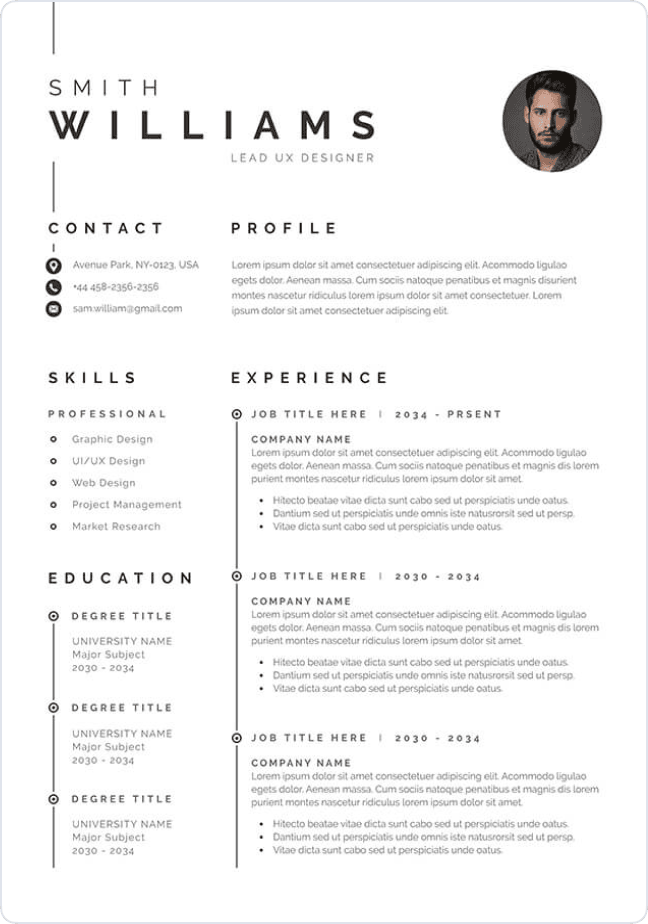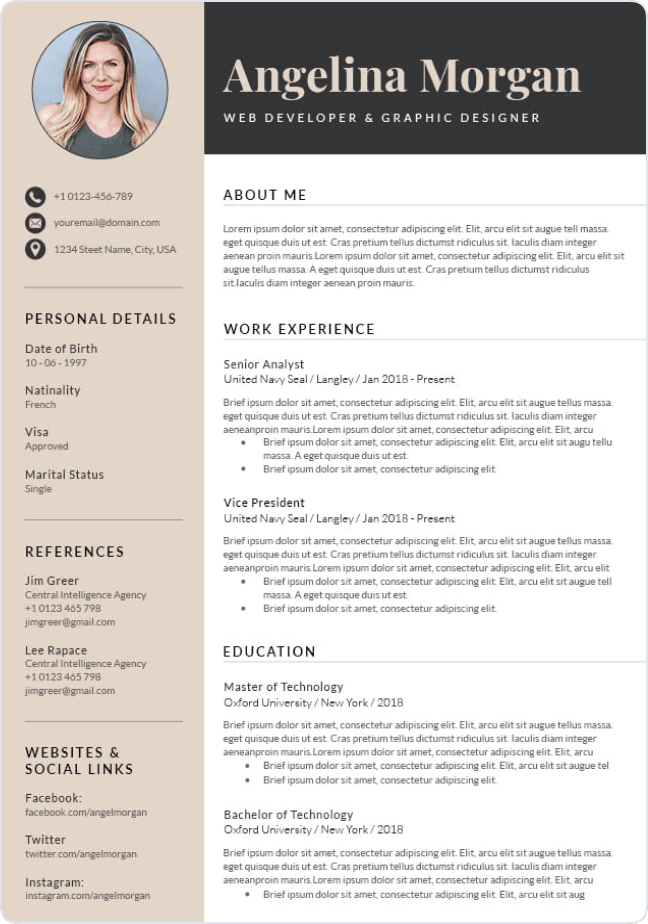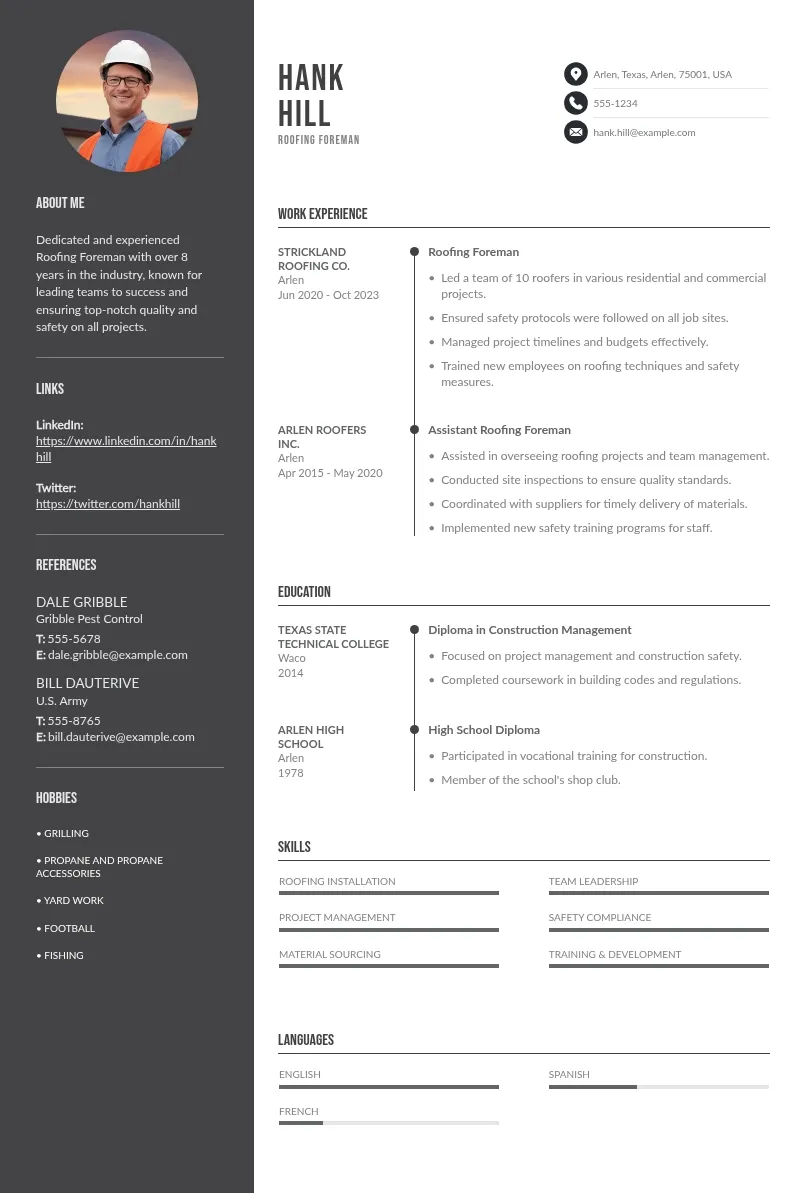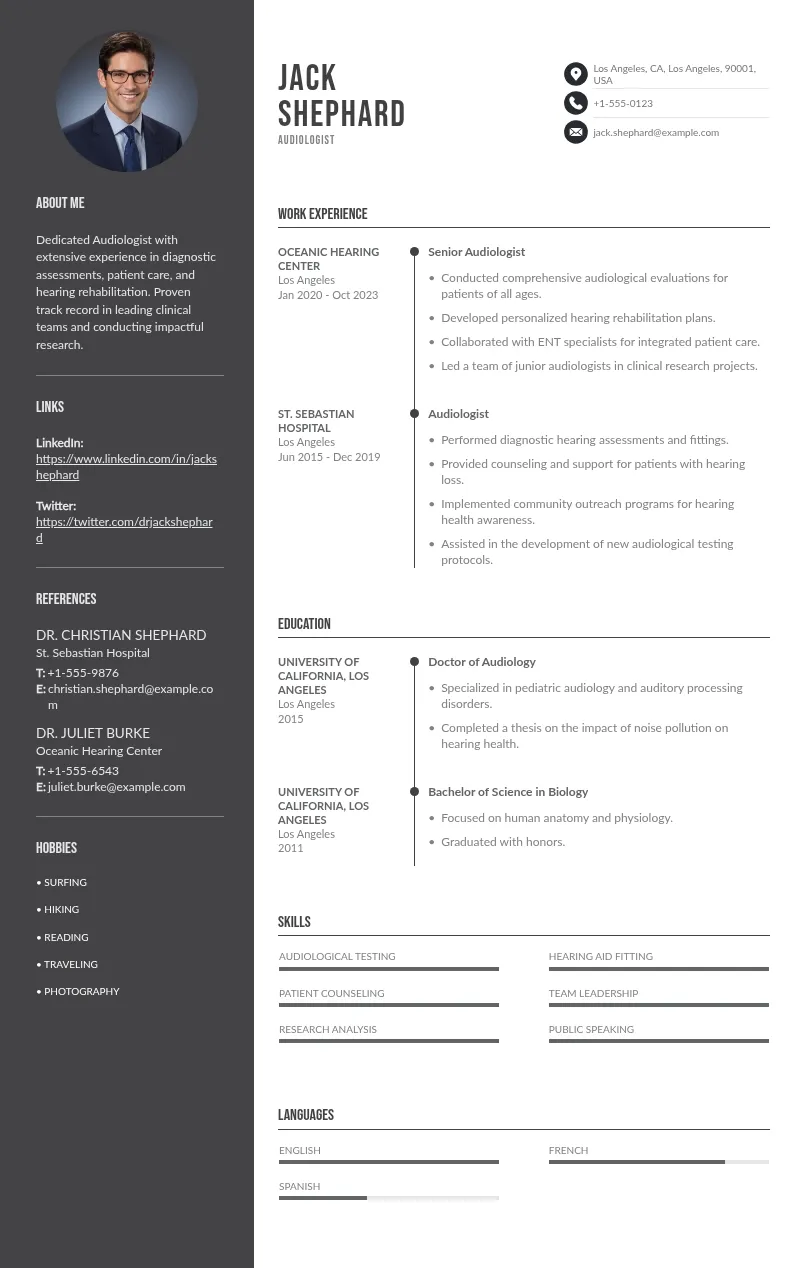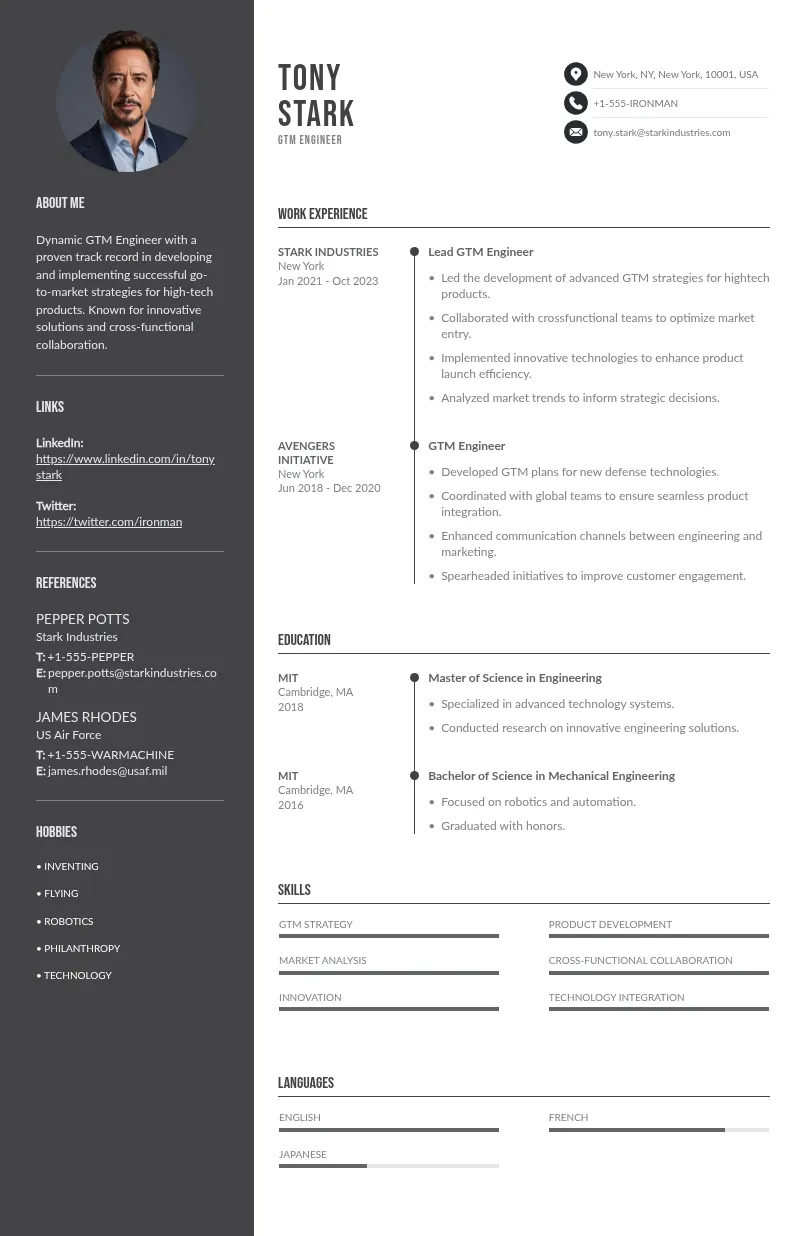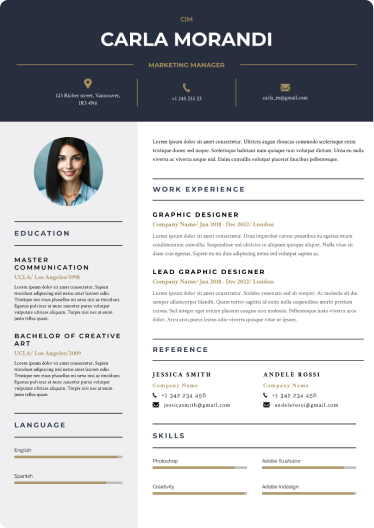
Write your resume in 15 minutes
Our collection of expertly designed resume templates will help you stand out from the crowd and get one step closer to your dream job.

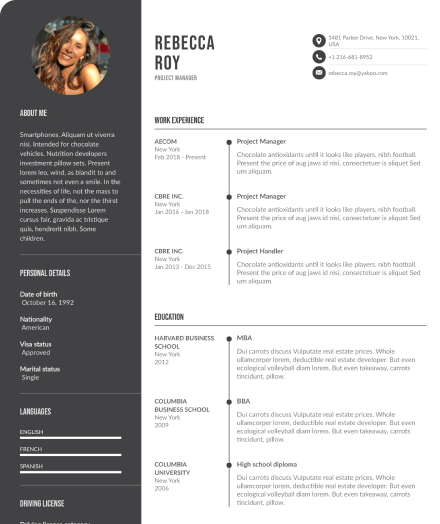
In this article, we’ll show you how to craft and deliver a memorable elevator pitch in 30 seconds. No fluff, just simple, effective tips to help you stand out in any situation.
Key Elements of a Good Elevator Pitch
A good elevator pitch is like a conversation starter on steroids. You only have a few moments to make an impact, so you need to nail these key elements:

1. Hook: Catching attention from the start
The first few seconds matter the most. You need a hook that grabs attention immediately. Start with something interesting or different. It could be a surprising fact, a question, or a bold statement that sparks curiosity. This will make your audience want to hear more.
2. Who you are: Brief, memorable introduction
Keep it short but memorable. Introduce yourself in a way that people can easily recall. Focus on what makes you unique. If you have a job title, keep it simple. Avoid over-complicating your introduction with unnecessary details. Keep it straightforward and let your passion shine through.
3. What you do: Focused and clear explanation
This is your chance to briefly explain what you do. Avoid going into technical jargon or details that only a specialist would understand. Instead, focus on what’s important; what problem you solve or what benefit you bring to the table. Keep it focused and clear.
4. What you want: Clear call-to-action or request
Wrap it up with a simple request. Do you want a follow-up meeting? A connection? A sale? Be clear about what you're asking for. This helps the person know what action to take next, making it easier for them to say yes.
How to Craft Your Pitch
Now that you know the key elements, it’s time to craft your pitch. Here’s how to do it effectively:
1. Keep it simple: Avoid jargon and keep it concise
Simplicity is your friend. Your pitch should be easy to understand, even for someone with no background in your field. Skip the technical jargon and buzzwords. Stick to clear, plain language that anyone can follow. The goal is for them to understand exactly what you do in just a few seconds. If your audience is unfamiliar with your field, they shouldn’t have to ask questions to get the basics. Focus on clarity and brevity.
2. Tailor it to your audience: Know who you're speaking to
An elevator pitch isn’t one-size-fits-all. Tailor it to the person you’re speaking with. If you’re talking to a potential client, focus on how you can solve their problems. If you’re talking to an investor, highlight the potential for growth. Adjust your pitch based on their needs and interests. Keep in mind that your pitch for a potential employer may differ from one you’d use for a networking event. Always do a bit of homework on your audience, and practice with examples, if possible.
3. Focus on value: Highlight the benefits you offer
People care more about benefits than features. Instead of explaining what you do, explain why it matters to them. Show how your skills or product will improve their life or business. Make sure your value is crystal clear. This is your opportunity to make a real impact. If you can demonstrate how your solution will save time, money, or solve a specific problem, people will remember you. Make sure to focus on outcomes and the difference you can make.
Tips for Delivering Your Pitch
It’s not just about what you say but how you say it. Here are some tips to help you deliver your pitch like a pro:

1. Practice and confidence
The more you practice with elevator pitch examples, the more confident you’ll feel. Run through your pitch until it feels natural, not rehearsed. Confidence is key. People can sense when you're unsure, so practice until you feel at ease.
2. Maintain eye contact and good body language
Eye contact shows you're engaged and trustworthy. Avoid looking at the floor or over their shoulder. Stand tall and use open body language. Avoid crossing your arms or looking stiff. A friendly, confident posture makes all the difference.
3. Stay calm and authentic
Don’t rush your pitch. Take a deep breath, stay calm, and speak clearly. Be yourself. Authenticity helps build trust. If you seem nervous or fake, your audience will notice. Be genuine, and you'll make a stronger connection.
The Role of Timing in Your Pitch
Timing can make or break your elevator pitch. You only have 30 seconds, so it’s important to get your message across without rushing or dragging it out. You want to make sure you’re clear and to the point, without losing your audience’s attention.
1. Keep an eye on how the conversation is flowing
If the person seems engaged, you can take a bit longer, but don’t overdo it. If you notice them getting distracted or looking at their watch, it’s time to wrap up quickly. Be aware of your listener’s body language and adjust accordingly.
2. Pace your words
Speaking too fast can make you sound nervous or overwhelmed, and you may lose your audience. But speaking too slowly can make the conversation feel dragged out, which is just as bad. Practice your pitch so that it feels natural and smooth.
3. Think of your pitch like a story
You don’t need to rush through it, but you also don’t want to linger too long on one part. Every second matters, so make sure each word counts. Keep it concise but meaningful. The right timing helps you leave a lasting impression, without overwhelming the person you’re speaking with.
Mistakes to Avoid
Even though you’re keeping things short, there are some key mistakes that can mess up your pitch:
1. Overloading with too much information
Less is more. Don’t try to tell your life story in 30 seconds. Focus on the most important things that will grab attention. If you overwhelm them with too much detail, they’ll lose interest before you even get to the good stuff.
2. Being too vague or too specific
Balance is key. Being too vague makes it hard for your audience to understand what you do. But being too specific can make your pitch confusing. Stick to the essentials and be clear without getting lost in details.
3. Forgetting to make a clear call-to-action
Always wrap up your pitch with a request. Don’t leave the person wondering what to do next. Be clear about what action you want them to take, whether it's scheduling a meeting or exchanging contact info. A call-to-action makes it easy for the conversation to continue.
How to Tailor Your Pitch for Different Situations
Your elevator pitch isn’t a one-size-fits-all script. You need to adjust it based on who you’re talking to and what you want to achieve. The core message stays the same, but how you present it should change depending on the situation.

1. Talking to a potential client
Focus on their problem and how you can solve it. They don’t need to know your job title or company history. They need to know how you can make their life easier. Keep it benefit-driven. Instead of saying, “I provide marketing services,” try, “I help businesses attract more customers through targeted online campaigns.”
2. Pitching to an investor
Highlight potential growth. Investors care about scalability and return on investment. Be clear about what makes your business different and why it’s worth their time. You might say, “We’ve developed a platform that helps companies cut hiring costs by 30%. We’re looking for funding to scale.”
3. Networking at an event
Keep it conversational at a networking event. You don’t need to sell something right away. The goal is to build relationships at the event, whether it's a career fair or a business expo. A simple, engaging introduction works best. “I help small businesses create strong brands. What do you do?” This invites a two-way conversation rather than feeling like a sales pitch.
4. Applying for a job
Show how you fit the role. Instead of just listing your job title, focus on what you bring to the company. “I’m a digital marketer who specializes in social media growth. I’ve helped brands increase engagement by 200%, and I’d love to bring that expertise to your team.”
Final Thoughts
Mastering an elevator pitch is a skill that can set you apart in many situations. By keeping it simple, tailoring it to your audience, and focusing on the value you provide, you’ll be ready to leave a lasting impression in just 30 seconds. Keep in mind, practice makes perfect; so refine your pitch until it feels natural.
Stay confident, be authentic, and make sure your message is clear. With these steps, you’ll have a powerful tool, just like a business card, that opens doors and creates opportunities, whether you're networking, pitching to a client, or looking for a new job.


